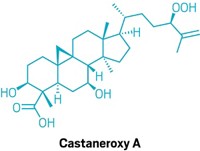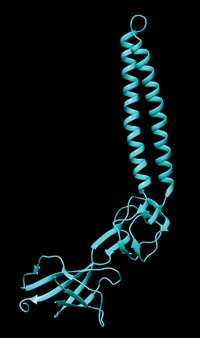Advertisement
Grab your lab coat. Let's get started
Welcome!
Welcome!
Create an account below to get 6 C&EN articles per month, receive newsletters and more - all free.
It seems this is your first time logging in online. Please enter the following information to continue.
As an ACS member you automatically get access to this site. All we need is few more details to create your reading experience.
Not you? Sign in with a different account.
Not you? Sign in with a different account.
ERROR 1
ERROR 1
ERROR 2
ERROR 2
ERROR 2
ERROR 2
ERROR 2
Password and Confirm password must match.
If you have an ACS member number, please enter it here so we can link this account to your membership. (optional)
ERROR 2
ACS values your privacy. By submitting your information, you are gaining access to C&EN and subscribing to our weekly newsletter. We use the information you provide to make your reading experience better, and we will never sell your data to third party members.
Biological Chemistry
Metabolites Turn On Pathogen's Virulence
Natural Products: Staph produces molecules that help it colonize humans
by Sarah Everts
June 7, 2010
| A version of this story appeared in
Volume 88, Issue 23
Bacteria are known to use modular multienzyme systems—the polyketide and nonribosomal peptide synthesis (NRPS) machinery—to make complex biomolecules, most of which are antibiotics against microbial competitors. A new report by a Canadian group reveals that pathogenic Staphylococcus aureus bacteria use NRPS-synthesized molecules called aureusimines to attack humans (Science, DOI: 10.1126/science. 1188888). Finding chemicals that block aureusimine production could lead to new antibiotics against this widespread Staphylococcus pathogen, which causes food poisoning, toxic shock syndrome, and other infections.
The team of researchers, led by Nathan A. Magarvey, a chemical biologist at McMaster University, in Ontario, has found that S. aureus makes the aureusimines itself. Those molecules activate a whole host of virulence genes encoding proteins that “do all sorts of nasty things to humans,” Magarvey says. In particular, these proteins lyse human blood cells as well as help the bacteria evade the body’s immune system and set up colonies in hosts. “The aureusimines are really dialed into staph’s ability to act as a pathogen,” Magarvey adds.
This “great paper” shows that “inhibition of aureusimine biosynthesis may represent a completely novel approach to target this important human pathogen,” comments chemist Bradley Moore, who studies bacterial natural products at Skaggs School of Pharmacy, in San Diego.
The work also “adds a new layer of function for an NRPS secondary metabolite—to act as a master regulator for such a large number of virulence genes,” notes Mohamed A. Marahiel, a chemist at Philipps University, in Marburg, Germany, who has solved the crystal structures of several components of the NRPS machinery. NRPS metabolites are most often used as antibiotics; other roles in regulation have been observed much less often.
Magarvey is now looking for molecules that might block production of the aureusimines as possible new drugs against S. aureus. Compared with a drug that kills the microbe outright, one that knocks out only virulence might present less evolutionary pressure for S. aureus to develop resistance, he says.
“Penicillin was the first antibiotic against staph, and it is also an NRPS-produced peptide” from fungi, Magarvey says. Little did scientists know that “staph itself was using NRPS machinery for its own pathogenic purposes,” he adds.






Join the conversation
Contact the reporter
Submit a Letter to the Editor for publication
Engage with us on Twitter